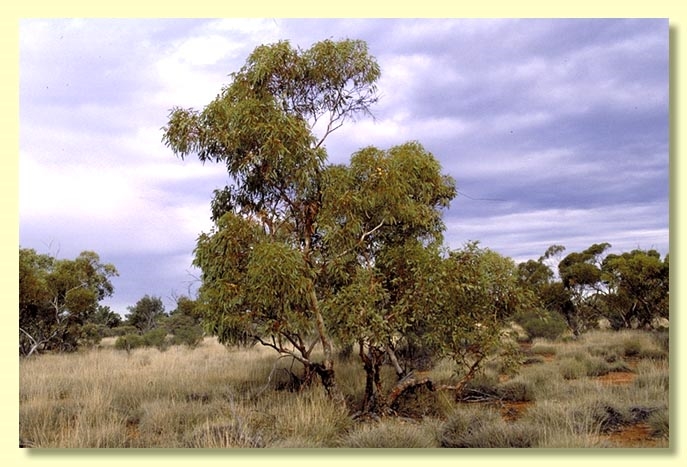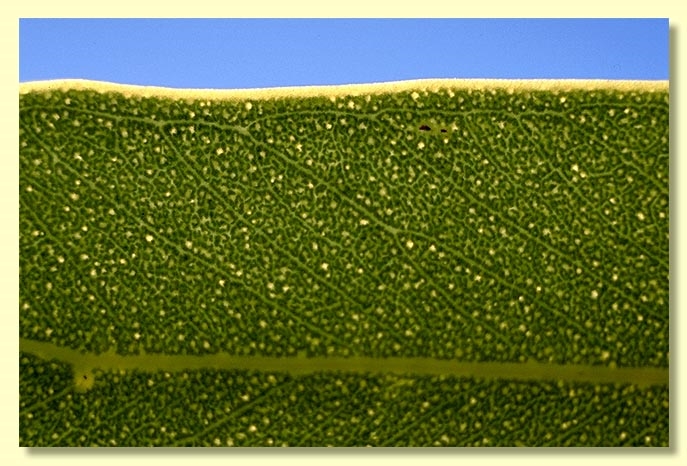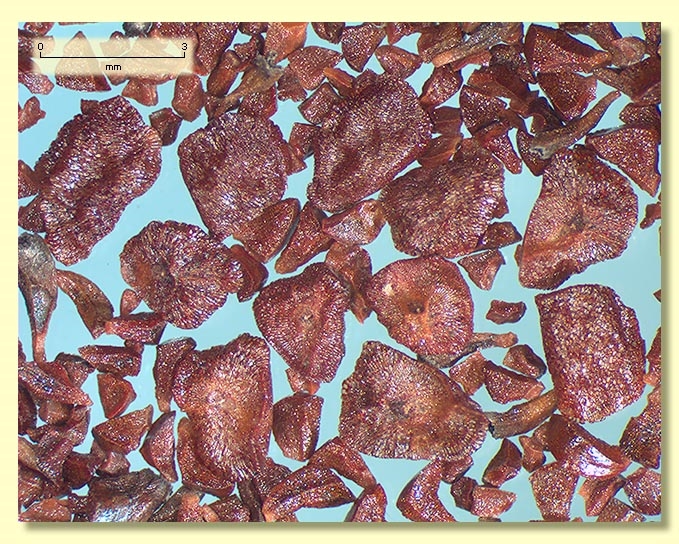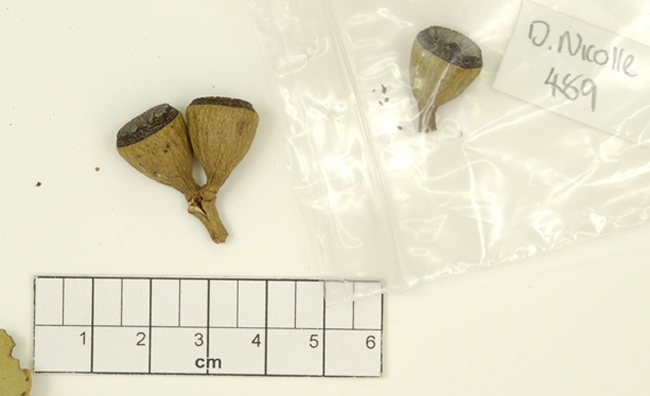Euclid - Online edition
Eucalyptus canescens subsp. beadellii
Eucalyptus | Symphyomyrtus | Dumaria | Rufispermae
Bark rough, grey and flaky on stems and branches to ca 5 cm diameter, smooth above, light grey over brown.
Branchlets non-glaucous, oil glands present in pith.
Juvenile growth (coppice or field seedlings to 50 cm): stems rounded to square in cross-section, non-glaucous; juvenile leaves always petiolate, opposite at only the lowest nodes then alternate, ovate, 6.5–10 cm long, 4.5–5.5 cm wide, dull, green.
Adult leaves alternate, petiole 1.5–2.5 cm long; blade ovate to lanceolate, (6)7.5–12.5(14.5) cm long, (1.7)2–5 cm wide, base tapering to petiole, margin entire, apex pointed, concolorous, dull to slightly glossy, green, side-veins at an acute or wider angle to midrib, reticulation dense, intramarginal vein remote from margin, oil glands intersectional.
Inflorescence axillary unbranched, peduncles 0.8–2.2 cm long, buds 7 per umbel, pedicels 0.4–0.7 cm long. Mature buds obovoid to pyriform (1.2–1.4 cm long, 1 cm wide), non-glaucous, scar present, operculum rounded and radially striate (0.5–0.6 cm long), stamens inflexed, anthers cuboid to wedge-shaped, versatile, sub-dorsifixed, dehiscing by longitudinal slits, style long and straight, stigma more or less rounded, locules 4 or 5, the placentae each with 4 vertical rows of ovules. Flowers creamy white.
Fruit pedicellate (pedicels 0.2–0.5 cm long), cupular to shortly cylindrical or obconical, 0.9–1.2 cm long, 0.9–1.2 cm wide, smooth or slightly ribbed, non-glaucous, disc descending, valves 4 or 5, near rim level.
Seeds reddish brown and glossy, 1.5–4 mm long, flattened-ovoid, dorsal surface shallowly reticulate, hilum ventral.
Cultivated seedlings (measured at ca node 10): cotyledons reniform; stems square in cross-section, non-glaucous; leaves always petiolate, opposite for ca 5 nodes then alternate, ovate, 3.5–8.5 cm long, 2–4.5 cm wide, dull, green.
Flowering time unknown.
Eucalyptus canescens is a mallee species occurring in the Great Victoria Desert in South Australia extending into Westrern Australia near Forrest Lakes. It is seen readily in the red sand dune country along the Cook – Vokes Hill track, its distribution extending east towards Maralinga and Ooldea. The bark is rough and flaky over part or most of the stems. The adult leaves are dull and the opercula ribbed.
In the classification of Brooker (2000) Eucalyptus canescens belongs in Eucalyptus subgenus Symphyomyrtus section Dumaria having these features: buds initially with two opercula the outer shed early, stamens strongly inflexed, ovules in 4 rows on the placentae and cotyledons reniform. Within section Dumaria the species belongs to a large sub-group of closely related species (series Rufispermae, 37 described species and subspecies) diagnosed by glandular pith in the branchlets, anthers cuboid to wedge-shaped, versatile, and by the reddish brown and glossy, flattish seeds which are unique to the series.
The only other Great Victoria Desert species in series Rufispermae is E. gypsophila which has narrower leaves and slightly smaller buds and fruit than E. canescens, and occurs around salt lakes on red sands over limestone.
There are two subspecies:
E. canescens subsp. canescens
The typical subspecies is strongly glaucous on the branchlets, buds and fruits while the leaves are blue-grey. The distribution is much wider than subsp. beadellii
E. canescens subsp. beadellii
This form is rare, being known from a small area on the Cook–Vokes Hill track. It differs from the typical subspecies by the completely non-glaucous buds and fruits, and the green, not blue-grey, adult leaves.
subsp. beadellii: honouring Len Beadell who surveyed many desert roads including the famous Gunbarrel Highway.
















